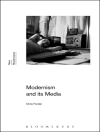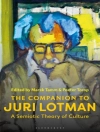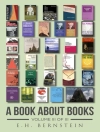This book argues that narrative literature very often, if not always, include significant amounts of what appears to be extra-literary material – in form and in content – and that we too often ignore this dimension of literature.
It offers an up to date overview and discussion of intermedial theory, and it facilitates a much-needed dialogue between the burgeoning field of intermedial studies on the one side and the already well-developed methods of literary analysis on the other. The book aims at working these two fields together into a productive working method. It makes evident, in a methodologically succinct way, the necessity of approaching literature with an intermedial terminology by way of a relatively simple but never the less productive three-step analytic method. In four in-depth case studies of Anglophone texts ranging from Nabokov, Chandler and Tobias Wolff to Jennifer Egan, it demonstrates that medialities matter.
Jadual kandungan
Acknowledgments.- 1. Introduction.- 2. What is Mediality, and (How) does it Matter? Theoretical Terms and Methodology.-
3. Speak, Memory? Vladimir Nabokov, “Spring in Fialta”.- 4. “This beats tapes, doesn’t it?” – Women, cathedrals, and other medialities in Raymond Carver’s “Cathedral”.- 5. “Great script, eh?” – Medialities, metafiction and non-meaning in Tobias Wolff’s “Bullet in the brain”.- 6. Between punk and Power Point: Authenticity versus medialities in Jennifer Egan’s
A visit from the goon squad.- 7. Afterthoughts.- Bibliography.- Index.-
Mengenai Pengarang
Jørgen Bruhn is Professor of Comparative Literature at Linnæus University, Sweden. His main focus areas are literary theory and criticism, intermediality and media studies, and adaptation studies. In 2013 he edited (with Anne Gjelsvik and Eirik Frisvold Hansen) and contributed to
Adaptation Studies: New Challenges, New Directions.












